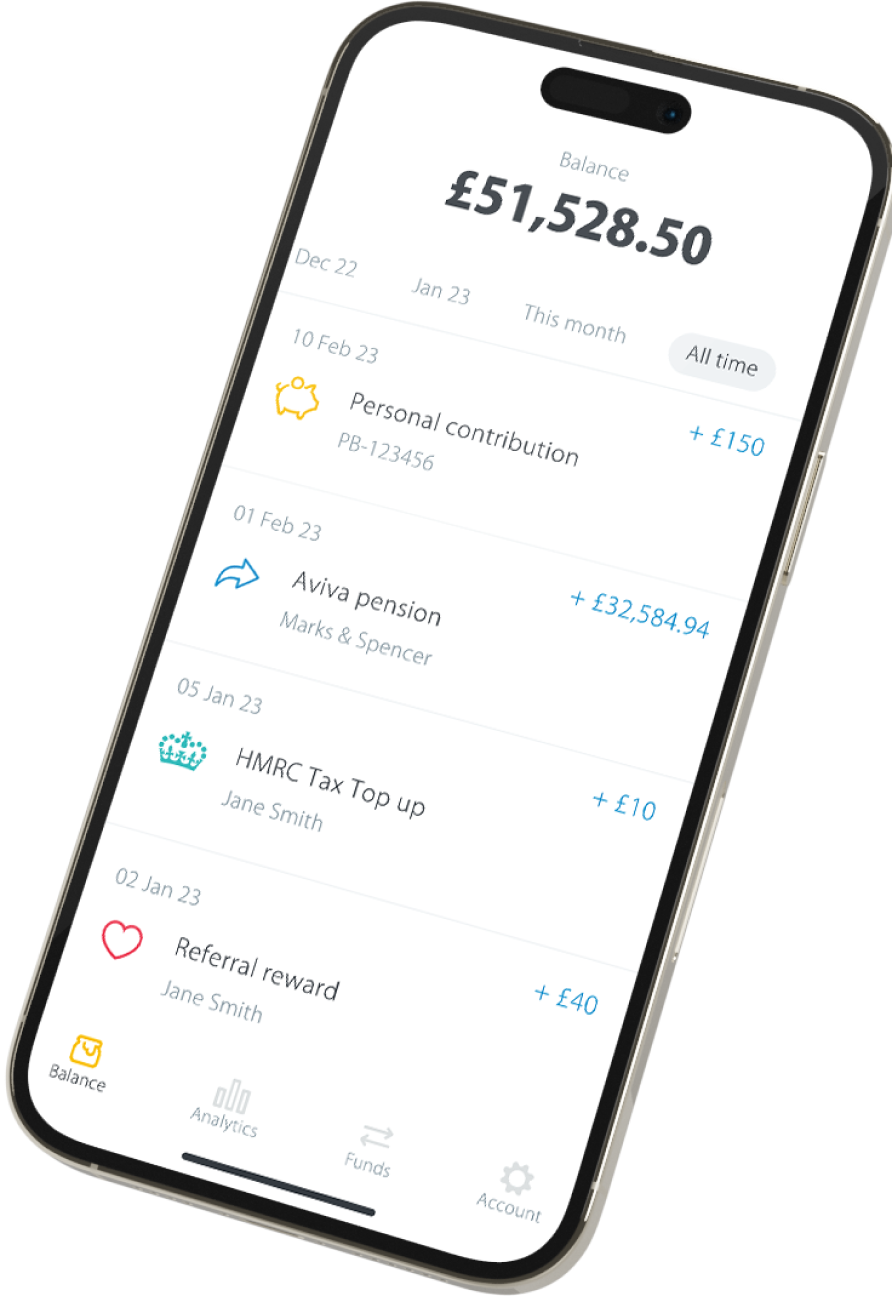Should I take a lump sum from my pension?
Once you reach the age of 55 (rising to 57 in 2028) you’ll have the option of taking some or all of your pension out in cash, referred to as a lump sum. The first _corporation_tax of your pension can be withdrawn tax free, but you’ll need to pay tax on any further withdrawals. You could pay less tax if you don’t take all of your pension as a lump sum.
How does taking out a lump-sum work?
Once you approach the age of 55 (rising to 57 in 2028), you’ll be asked what you want to do with your pension. Some pension providers will send you paperwork to fill out, while others - like PensionBee - will allow you to decide online. You don’t have to do anything with your pension, but if you choose to take out a lump sum in cash you’ll want to be aware of the tax implications.
Is a pension lump sum taxable?
Taxable pension withdrawals are considered income and are added to your total annual income. So your income tax band may change depending on the amount you withdraw.
Let’s look at an example where you earn £30,000 a year:
- if you took out £15,000 as a lump sum from the taxable part of your pension, your total annual income would be £45,000 which puts you in the _basic_rate basic rate tax band; and
- if you took out £30,000 from the taxable part of your pension, your total income would be _annual_allowance which puts you in the _higher_rate higher rate tax band.
Tax efficiency
So, are pension lump sums taxable? As we’ve seen, it depends on how much you take out during each tax year and the impact that has on your annual income tax. When considering how much money you want to take out as a lump sum, think about its tax implications. Taking out a lot in one go could cost you more in tax than taking out smaller amounts spread out over several years.
Pension tax-free lump sum
_corporation_tax of your pension can be withdrawn tax-free. For example:
- if your pension was worth _high_income_child_benefit and you took out £25,000 in one go (_corporation_tax), you wouldn’t have to pay any tax; and
- if you wanted to take out £30,000 in one go, you’d have to pay tax on _starting_rates_for_savings_income - the amount over the _corporation_tax threshold.
Differences between defined contribution and benefit pension schemes
You can withdraw a lump sum from both a defined contribution and benefit pension, but the amount you can withdraw tax-free could be different depending on which type of pension you have.
Defined contribution pension lump sum
A defined contribution pension, like the plans that PensionBee offers, is the most common type of pension. The retirement value is impacted by how much you (and your employer, if it’s a workplace pension) paid into it and how it performs over time.
Once you’re eligible, you can withdraw up to _corporation_tax of your defined contribution pension as a tax-free lump sum. As soon as you withdraw any amount from your _corporation_tax tax-free portion, your pension will contain ‘crystallised’ funds. At this point, you’ll be required to choose what to do with the remaining portion of your pension.
You could either:
- take out smaller lump sums, as and when you need it;
- buy an annuity, to receive a guaranteed income for the rest of your life; or
- leave your money invested where it can continue to grow.
If you decide to take some or all of the remainder of your pension as a lump sum, bear in mind that this could result in a hefty tax bill (as highlighted in the section below).
Defined benefit pension lump sum
A defined benefit pension (or final salary pension) is a less common type of workplace pension. The retirement value is calculated based on the number of years you worked at the company and your average salary during those years. Defined benefit pensions also have a tax-free portion limited to _corporation_tax of the value of the scheme. But there’s also a calculation called the ‘commutation factor’ that needs to be accounted for.
When you take tax-free cash from a defined benefit pension, this comes at the expense of the annual income that the pension will pay out. Your income will be reduced by a factor of the tax-free lump sum that you take out, known as the ‘commutation factor’. The lower the factor is, the more of your annual pension you have to give up in order to take the tax-free cash.
Typically, the commutation factor is around 15. This means that for every £15,000 you take out as a lump sum, your annual pension income will be reduced by _basic_rate_personal_savings_allowance. For example, if you decide to take out _isa_allowance from your defined benefit pension as a lump sum. If your commutation factor was 15, this would result in your annual pension income being reduced by £1,333.
{{main-cta}}
Pros and cons of taking out a lump sum
Taking out a lump sum can be a useful way of accessing money quickly, but it isn’t without its downsides.
Benefits of taking out a lump sum
- you can take out one-off or regular chunks of money as when you need it;
- _corporation_tax of your pension can be withdrawn tax-free;
- if you leave the rest of the pension invested, it will still have a chance to grow; and
- for anything above your _corporation_tax tax-free allowance, taking smaller amounts of money out of your pension pot each tax year will manage the income tax you pay each year more efficiently.
Downsides of taking out a lump sum
- you may have to pay more tax depending on the size of the lump sum you withdraw;
- once the full _corporation_tax tax-free portion is taken out, the maximum tax relief available on money you pay into your pension falls to _money_purchase_annual_allowance a year. This is called the Money Purchase Annual Allowance; and
- we often underestimate how long we’re going to live, and taking too much money out too early could result in running out of money before you die.
Taking a lump sum from your State Pension
The State Pension is a regular benefit payment made by the government that begins when you reach retirement age (currently _state_pension_age, rising to _pension_age_from_2028 in 2028). It’s not possible to take out a lump sum from your State Pension, unless you first delay receiving regular payments.
If you delay receiving your State Pension, you’ll have the following options when you finally receive it:
- receive regular payments for an increased amount; or
- take out the value of payments that were delayed (plus ~6% per year delayed, plus inflation) as a lump sum.*
*This is only applicable if you reached State Pension age before 6 April 2016.
Combining your pensions
If you have more than one pension, figuring out how much you can take out tax free from each one and how that impacts your income tax liabilities can become tricky. In some cases, you may have other fees to pay too. Combining your pensions into one makes managing your withdrawals much simpler, whether you intend on taking out a lump sum, regular drawdowns, buying an annuity, or a combination of the three. PensionBee is a leading online pension provider that specialises in combining your pensions effortlessly. Find out more today.
Risk warning
As always with investments, your capital is at risk. The value of your investment can go down as well as up, and you may get back less than you invest. This information should not be regarded as financial advice.
Last edited: 06-04-2025


Be pension Confident!
Be pension Confident!




- Sign up in minutes
- Transfer your old pensions into one new online plan
- Invest with one of the world’s largest money managers
- Pay just one simple annual fee












